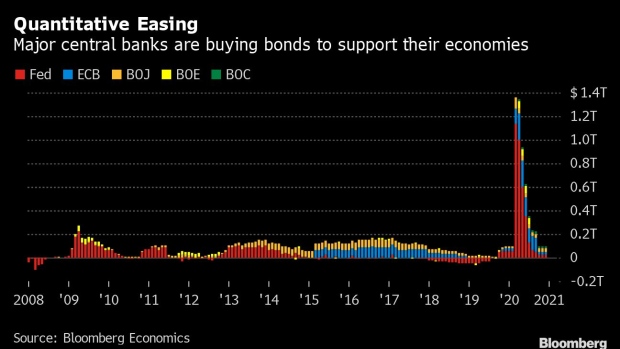May 15, 2020
Goldman Warns Central Bank QE Not Enough for Avalanche of Bonds
, Bloomberg News

(Bloomberg) -- In the epic battle between the trillions of dollars of debt supply needed to finance soaring government deficits, and central banks’ bond buying, the latter is losing, according to Goldman Sachs Group Inc.
That will lead to higher long-term borrowing costs, particularly in the U.S., the bank said, as it examined whether quantitative-easing programs can buy enough government bonds to keep yields in check.
“Greater duration supply adds to the case for higher rates and steeper curves,” wrote Avisha Thakkar, a strategist at Goldman, in a note to clients. “Central bank buying should absorb a substantial amount of upcoming issuance, though we expect increases in ‘free float’ across most markets.”
Global central banks have so far managed to keep yields close to record lows as governments raise spending to unprecedented levels to soften the damage from the coronavirus. But investors are beginning to get worried that problems are building up further down the line should stimulus be pulled back, or inflation accelerate.
An $8 Trillion Spree Sets Clock Ticking for Bonds’ Judgment Day
New Zealand is set to be the only developed country that is likely to see a shrinking pool of debt available to investors. In the U.K., even an increase to the Bank of England’s bond-buying program next month will not be enough to offset the extra supply, according to Goldman’s analysis.
It estimates that a 10-percentage-point increase in excess bond supply would imply between 10 basis points and 20 basis points of steepening in the yield gap between five-year and 30-year U.S. Treasuries.
©2020 Bloomberg L.P.